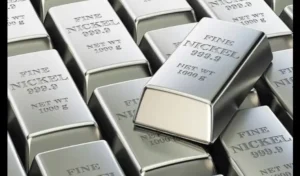Characteristics of Copper:
Copper holds the third position in global metal consumption, following steel and aluminum. Its demand closely mirrors the state of the world economy.
Copper stands out as the premier non-precious metal conductor of electricity, prized for its exceptional conductivity, strength, ductility, and resistance to corrosion. It is extensively used in building wiring, power cables (both insulated and uninsulated) for various voltage applications, energy-efficient motors, transformers, and automobiles.
Supply and Demand Scenario – Global:
Copper’s supply and demand dynamics are influenced by economic, technological, and societal factors. Growing societal needs drive the introduction of new mines and expanded operations. Land-based copper resources are estimated at 1.6 billion tons, with an additional 0.7 billion tons in deep-sea nodules. Global refined copper production stands at approximately 15 million tons.
Major copper-consuming nations include Western Europe (28.5%), the United States (19.1%), Japan (14%), and China (5.3%). Copper and copper alloy scrap contribute significantly to the world’s supply, with the United States and Europe as major sources of scrap. Chile, Indonesia, Canada, and Australia are leading exporters, while Japan, Spain, China, Germany, and the Philippines are key importers.
India Scenario:
India’s copper industry, comprising around 4 lakh tons, represents 3% of the global copper market. Birla Copper and Sterlite Industries are major private producers, alongside Hindustan Copper Ltd as a prominent public sector producer. India’s transition from a net importer to a net exporter of copper is attributed to increased production by key companies.
Copper finds applications in various sectors such as building construction, power and telecommunications cabling, and automobiles. State-owned telecommunications providers BSNL and MTNL consume 10% of the country’s copper production. Continued growth in construction and automobile sectors is expected to sustain demand.
World Copper Markets:
The London Metal Exchange (LME) and NYMEX serve as key international markets influencing copper prices. The top eight refining nations, including the United States, Japan, Chile, Canada, Zambia, Belgium, and Germany, contribute to 67% of total refined metal production.
Factors Influencing Demand and Supply:
Copper prices in India are determined based on rates set on the LME the previous day. World copper mine production, economic growth in major consuming countries like China, Japan, and Germany, and advancements in the building, electronics, and electrical industries all play significant roles in shaping copper demand and supply dynamics.
| Percentage Change | 0-2 | 2-5 | 5 & above |
|---|---|---|---|
| Monthly | 46 | 36 | 21 |


















